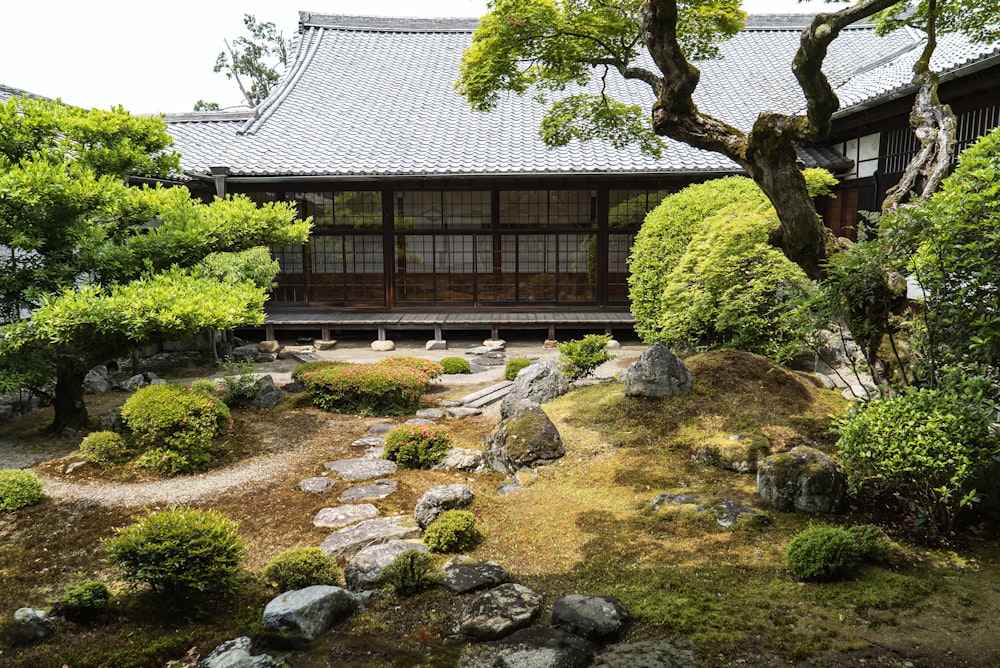Zen Oasis: Japanese Garden Harmony
Step into the serenity of a Japanese garden, where every element is meticulously designed to create a harmonious oasis of tranquility. From lush greenery to symbolic structures, the Japanese garden is a testament to a centuries-old art form that continues to captivate with its beauty and mindful design.
Roots in Tradition: The Essence of Japanese Garden Design
Japanese gardens trace their roots back to ancient traditions, where the harmony of nature and human-made elements was paramount. The essence of Japanese garden design lies in the intentional arrangement of rocks, water features, plants, and structures to create a balanced and aesthetically pleasing environment.
Symbolism in Every Stone: The Art of Japanese Garden Elements
Every stone, every plant in a Japanese garden holds symbolic significance. Boulders represent mountains, while carefully raked gravel mimics flowing water. Lanterns and bridges are not just decorative; they symbolize spiritual illumination and the journey of life. Each element contributes to a narrative that unfolds as you wander through the garden.
Seasonal Palette: Nature’s Ever-Changing Canvas
A Japanese garden is a living masterpiece, evolving with the seasons. Cherry blossoms herald spring, vibrant foliage paints the landscape in autumn hues, and evergreen plants provide a sense of continuity in winter. The seasonal palette ensures that no visit is ever the same, inviting you to experience nature’s ever-changing canvas.
Serene Water Features: Flowing Tranquility
Water is a fundamental element in Japanese gardens, representing the ebb and flow of life. Whether it’s a tranquil pond, a meandering stream, or a cascading waterfall, water features add a soothing soundtrack to the garden. They bring a sense of movement and tranquility, encouraging contemplation and mindfulness.
Pruned to Perfection: The Art of Japanese Garden Trees
Trees in a Japanese garden are not just plants; they are sculpted works of art. Pruned and shaped with precision, they contribute to the overall aesthetic. Pine trees symbolize endurance, while delicate maples evoke a sense of grace. The art of bonsai, a miniature tree form, is also often showcased, highlighting the mastery of horticultural craftsmanship.
Tea Gardens: Rituals of Tranquility
Within the Japanese garden, a tea garden, or “roji,” provides a space for the traditional Japanese tea ceremony. Surrounded by carefully curated nature, the tea garden is a place of ritual and tranquility. Stepping stones guide the way, and a small tea house becomes a haven for the art of tea preparation and appreciation.
Winding Paths: Journey of Discovery
The layout of a Japanese garden is intentional, with winding paths that lead visitors on a journey of discovery. As you stroll through the garden, each turn reveals a new vista, a hidden pond, or a perfectly framed view of a carefully placed stone. The winding paths create a sense of anticipation and encourage a mindful exploration of the surroundings.
Cultural Connection: Japanese Gardens Beyond Borders
While deeply rooted in Japanese culture, the beauty of Japanese gardens has transcended borders. Across the globe, enthusiasts and designers draw inspiration from the principles of Japanese garden design to create their own havens of tranquility. The cultural connection fostered by these gardens extends beyond Japan’s borders, influencing landscapes worldwide.
Experience Zen Harmony: Explore Japanese Garden
Ready to immerse yourself in the Zen harmony of a Japanese garden? Explore the enchanting world of Japanese garden design at patricketsesfantomes.com. From symbolic elements to seasonal beauty, discover the timeless allure of these meticulously crafted landscapes that invite you to find serenity in every step.

